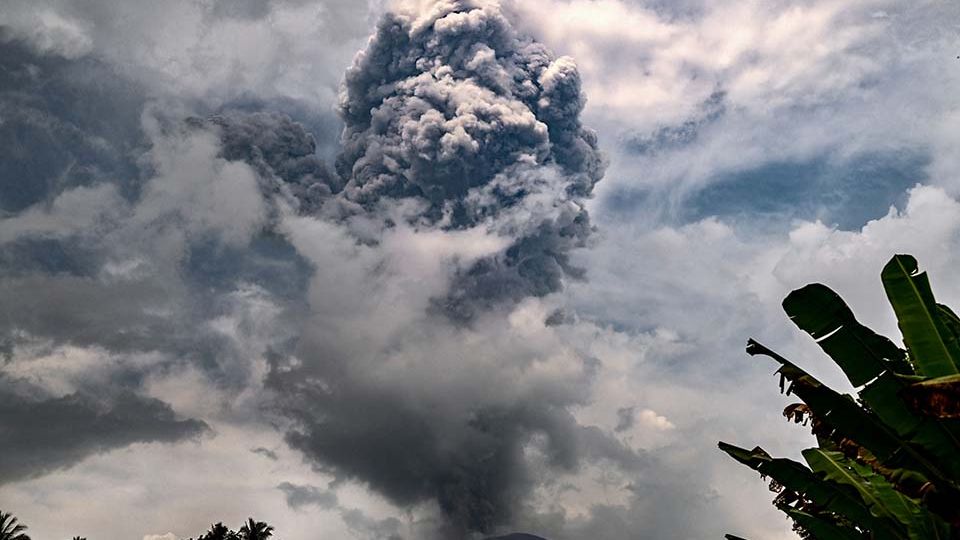JAKARTA (ANN/THE JAKARTA POST) – Mount Ibu in North Maluku erupted on Wednesday, spewing hot lava and a massive plume of smoke and ash 1,000 metres high, according to an official.
The volcano, located on Halmahera Island, erupted at 9:45 p.m. eastern Indonesia time, releasing hot glowing lava 300 metres above the summit.
An official at Mount Ibu’s monitoring post, Axl Roeroe, said the volcano also spewed a thick grey ash column that traveled eastward and reached a height 2,300 m above sea level.
“Seismic data recorded a maximum amplitude of 14 millimetres, with the eruption lasting one minute and 15 seconds,” Axl said on Wednesday, as reported by Kompas.
He said the noise of the eruption was heard at the observation post, located in Gam Ici village, around 9 km from the volcano.
No new evacuation order has been issued, but visitors and locals have been instructed to vacate a zone 4 to 5 km from the peak. Authorities also urged people to don face masks and protective goggles in case of volcanic ash rain.
Authorities have maintained Mount Ibu’s status at Level III siaga (watch), the second-highest of the four-tier volcano alert system.
Mount Ibu is one of the most active volcanoes in the country, erupting around 1,000 times in January alone.
A massive eruption that took place on Jan. 16 prompted the National Disaster Mitigation Agency (BNPB) to evacuate dozens of residents from six villages located within a radius of 6 kilometres from the summit.

Eruptions elsewhere
The day before, Mount Ile Lewotolok in Lembata regency, East Nusa Tenggara (NTT), erupted 179 times, emitting loud growling and booming sounds.
An official at the volcano monitoring post, Stanislaus Ara Kian, said the eruptions lasted between 27 and 225 seconds, with seismic readings ranging from 17 to 38 millimetres.
Stanislaus said Mount Raung’s status remained at Level II waspada (advisory) and urged the public to avoid all activities within a 25 km radius of the summit.
Authorities also advised residents of the villages of Jantona, Lamatokan, Todanara, and Amakaka – located at the base of the 1,523-metre volcano – to stay vigilant for falling rocks and volcanic landslides.
Residents living near rivers originating from Mount Ile Lewotolok were advised to remain alert for potential lahar flows, particularly as the rainy season continues.
Last week, a massive eruption also occurred at Mount Lewotobi Laki-laki in NTT, prompting authorities to raise the alert status to the highest level and evacuate around 5,000 people from villages within 8 km of the summit.
Domestic and international airlines were forced to cancel numerous flights to the nearby island of Bali as the volcano released ash clouds that reached over 8 km into the sky.
The eruption also caused a local farmer to sustain serious burns. He passed away on Thursday after undergoing medical care.





